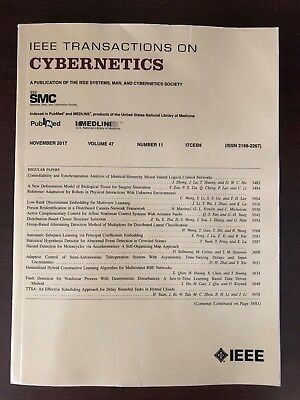ERMAV: Efficient and Robust Graph Contrastive Learning via Multiadversarial Views Training
IF 9.4
1区 计算机科学
Q1 AUTOMATION & CONTROL SYSTEMS
引用次数: 0
Abstract
Graph contrastive learning (GCL) is emerging as a pivotal technique in graph representation learning. However, recent research indicates that GCL is vulnerable to adversarial attacks, while existing robust GCL methods against adversarial attacks are inefficient and lack scalability due to the significant computational expenses of explicit adversarial attacks on the graph structure. To address the shortcomings of existing approaches, we propose an efficient and robust GCL via multiadversarial views training framework, called ERMAV. Specifically, the ERMAV generates two adversarial views by attacking both node attributes and latent representations on randomly sampled subgraphs. The method conducts explicit adversarial attacks on node attributes by attacking node attributes and implicit adversarial attacks on the graph structure by attacking latent representations, which avoids the costly computation of explicit graph structure attacks. Moreover, two efficient attack methods are developed to construct adversarial perturbations, which can dynamically generate different adversarial views to enhance sample diversity in the training phase. Furthermore, to validate the effectiveness and robustness of the proposed framework, extensive experiments of node classification on seven real-world datasets are conducted. Experimental results show that our ERMAV outperforms state-of-the-art GCL methods on the original graphs and is consistently more robust than existing robust GCL methods on a variety of attacked graphs. This demonstrates the strong robustness and great potential of our ERMAV in real-world applications.ERMAV:基于多对抗视图训练的高效鲁棒图对比学习。
图对比学习(GCL)是图表示学习中的一种关键技术。然而,最近的研究表明,GCL容易受到对抗性攻击,而现有的抗对抗性攻击的鲁棒GCL方法效率低下,缺乏可扩展性,因为对图结构进行显式对抗性攻击的计算开销很大。为了解决现有方法的缺点,我们提出了一个通过多对抗视图训练框架(称为ERMAV)的高效且稳健的GCL。具体来说,ERMAV通过攻击随机采样子图上的节点属性和潜在表示来生成两个对抗视图。该方法通过攻击节点属性对节点属性进行显式对抗性攻击,通过攻击潜在表示对图结构进行隐式对抗性攻击,避免了显式图结构攻击的计算量大。此外,提出了两种有效的攻击方法来构建对抗摄动,可以动态生成不同的对抗视图,以增强训练阶段的样本多样性。此外,为了验证所提出框架的有效性和鲁棒性,在7个真实数据集上进行了大量的节点分类实验。实验结果表明,我们的ERMAV在原始图上优于最先进的GCL方法,并且在各种受攻击图上始终比现有的鲁棒GCL方法更具鲁棒性。这证明了我们的ERMAV在实际应用中的强大鲁棒性和巨大潜力。
本文章由计算机程序翻译,如有差异,请以英文原文为准。
求助全文
约1分钟内获得全文
求助全文
来源期刊

IEEE Transactions on Cybernetics
COMPUTER SCIENCE, ARTIFICIAL INTELLIGENCE-COMPUTER SCIENCE, CYBERNETICS
CiteScore
25.40
自引率
11.00%
发文量
1869
期刊介绍:
The scope of the IEEE Transactions on Cybernetics includes computational approaches to the field of cybernetics. Specifically, the transactions welcomes papers on communication and control across machines or machine, human, and organizations. The scope includes such areas as computational intelligence, computer vision, neural networks, genetic algorithms, machine learning, fuzzy systems, cognitive systems, decision making, and robotics, to the extent that they contribute to the theme of cybernetics or demonstrate an application of cybernetics principles.
 求助内容:
求助内容: 应助结果提醒方式:
应助结果提醒方式:


